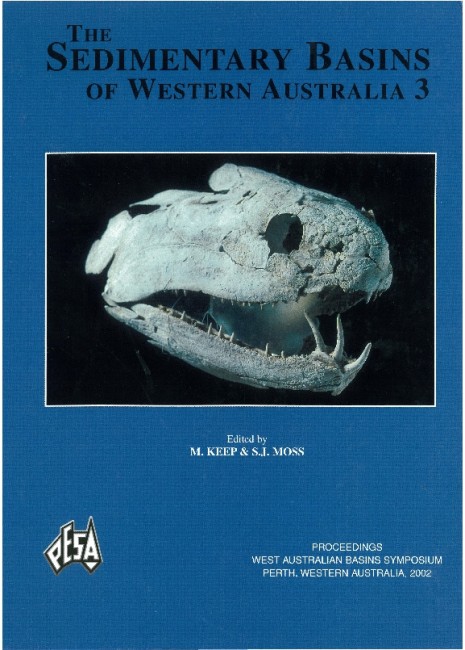Publication Name: The Sedimentary Basins of WA
Authors: M.W. Wallace, H.A. Middleton, B. Johns & S. Marshallsea
Publication Volume: 3
Date Published: December 2002
Number of Pages: 39
Reference Type: Book Section
Abstract:
A wide range of maturation parameters indicates that near-surface Devonian sequences of the eastern Lennard Shelf are immature (peak temperatures of 70-90?C). Fluid inclusion microthermometry indicates that peak temperatures in the Palaeozoic were probably around 60 to 70?C for presendy exposed or near-surface rocks. Mississippi Valley-type (MVT) deposits on the eastern Lennard Shelf appear not to have thermal anomalies around them. Negative anomalies in vitrinite reflectance and Tmax associated with mineralisation appear to be caused by chemical, rather than thermal processes. This suggests that mineralisation occurred under conditions of regional burial, with uniformly elevated temperatures. Petrologic evidence indicates that hydrocarbons entered the carbonates contemporaneously with MVT mineralisation on the Lennard Shelf at about 350 Ma. The reservoir-shaped geometry of the Cadjebut Zn-Pb deposit, together with the presence of stalactitic sulfide textures from a number of deposits suggest that buoyant phases like gaseous hydrocarbons have played a role in sulfide precipitation. We suggest that at around 350 Ma, in-situ, low temperature ( <90?C) bacterial sulfatereduction occurred in association with migrated hydrocarbons to produce H2S-rich reservoirs in the reef
complexes. The sulfate was probably derived from local Givetian evaporites and other sources. These sour gas accumulations then reacted with metalliferous brines from the Fitzroy Trough to produce the economic base-metal sulfide deposits of the Lennard Shelf.


